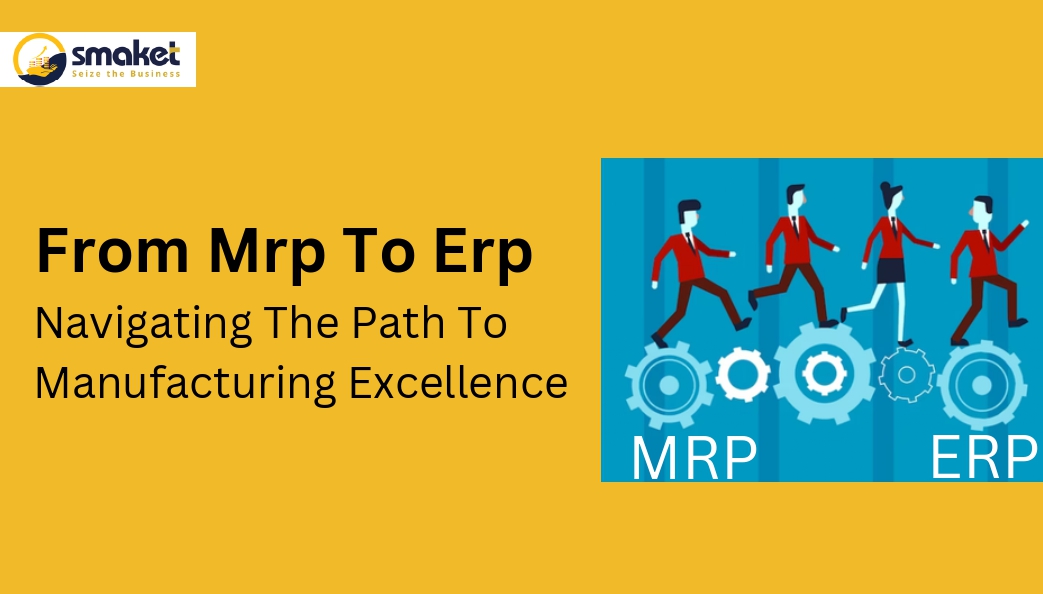In the realm of modern manufacturing, the journey from Material Requirement Planning (MRP) to Enterprise Resource Planning (ERP) has transformed the way businesses approach production, efficiency, and growth. As industries evolve, so do the tools and strategies that drive success. In this article, we’ll explore the evolution from MRP to ERP systems, uncovering how this transition paves the way for manufacturing excellence.
The Foundation: Material Requirement Planning (MRP)
Material Requirement Planning (MRP) emerged in the 1960s as a revolutionary system for managing manufacturing inventory. At its core, MRP allowed manufacturers to streamline their production process by determining what components were needed, the required quantities, and precise timings. By doing so, MRP aimed to minimize idle materials, boost efficiency, and ensure timely production.
Elevating the Game: Manufacturing Resource Planning (MRP II)
As the manufacturing landscape continued to evolve, so did the demands of businesses. This led to the birth of Manufacturing Resource Planning (MRP II) in the 1980s. MRP II extended the capabilities of MRP by incorporating not only material requirements but also financial aspects and employee data. This holistic approach empowered manufacturers to optimize labor, manage costs, and foster collaboration among different departments.
The ERP Revolution: Integrating for Excellence
Enter Enterprise Resource Planning (ERP), the pinnacle of manufacturing management systems. ERP takes the foundation laid by MRP and MRP II and expands it into an all-encompassing solution that integrates various business processes. ERP systems seamlessly combine production, finance, inventory, HR, and more, creating a unified environment where data-driven decision-making becomes second nature.
Benefits of the Transition: Manufacturing Excellence Unveiled
Streamlined Operations:
From MRP to ERP, the transition allows for cohesive, streamlined operations across various departments, ensuring a synchronized approach to production and beyond.
Accurate Forecasting:
ERP’s advanced forecasting capabilities provide manufacturers with the tools to anticipate market demands and also make precise production plans, reducing uncertainty.
Cost Management:
With integrated financial modules, ERP systems enable businesses to accurately track costs associated with labor, production, and other aspects, facilitating smarter financial decisions.
Resource Optimization:
ERP’s robust modules ensure optimal utilization of resources, including materials, labor, and machinery, leading to reduced waste and also increased efficiency.
Enhanced Collaboration:
ERP fosters collaboration among different departments by providing real-time data, promoting informed decision-making, and also facilitating smoother communication.
Adaptability to Market Changes:
ERP systems equip businesses with the agility to adapt quickly to market shifts, enabling them to respond effectively to new challenges and opportunities.
Choosing the Right Path: MRP vs. ERP
When deciding between MRP and ERP, businesses need to consider their growth trajectory, industry dynamics, and long-term goals. Smaller enterprises may find value in MRP’s inventory management focus, while larger organizations aiming for comprehensive business optimization will benefit more from the integrated capabilities of ERP.
Conclusion:
The journey from MRP to ERP signifies the dynamic evolution of manufacturing management systems. As businesses strive for manufacturing excellence, then transition to ERP becomes a strategic move that empowers them to embrace change, optimize operations, and thrive in an ever-evolving market. Whether stepping onto the ERP path or leveraging MRP’s inventory prowess, manufacturers now have the tools to navigate the road to excellence with confidence and foresight.

